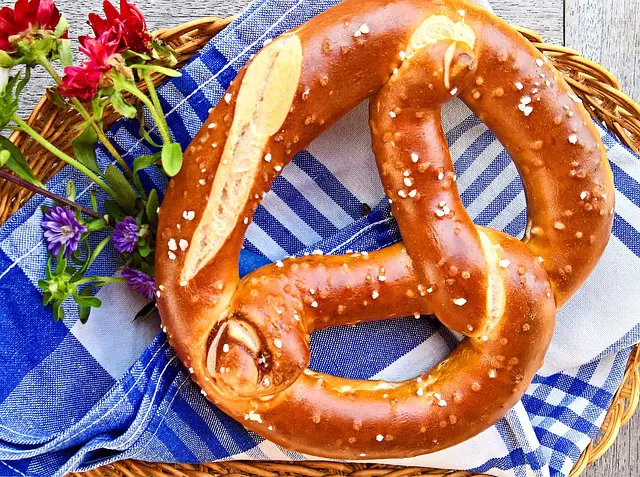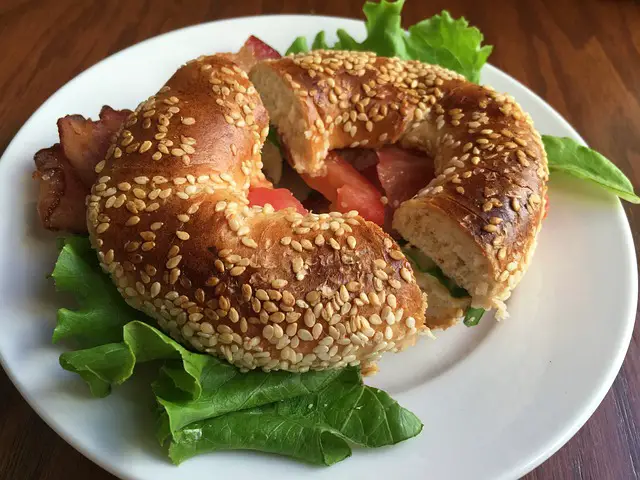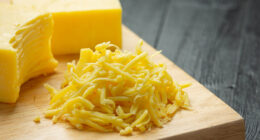Strong flour has more gluten, making it ideal for bread. Plain flour has less gluten, better for cakes and pastries.
TL;DR Strong Flour Vs. Plain Flour
When it comes to making breads with a chewy texture and good rise, strong flour is the go-to choice. Its high gluten content allows for better fermentation and results in a lighter loaf with excellent crumb structure. It’s perfect for baguettes, pizza dough, or any recipe that requires strength and elasticity.
Plain flour, on the other hand, works well when you want your baked goods to be tender and light. It’s ideal for cakes, cookies, muffins, or any dessert where you desire a soft texture without too much chewiness.
What is Strong flour?

Strong flour, also known as bread flour or high-gluten flour, is a type of wheat flour that contains a higher protein content than plain flour. This extra protein comes from the gluten-forming proteins found in wheat, which give the dough its elasticity and structure. With a protein content typically ranging from 11-14%, strong flour is perfect for making yeast-based breads and other baked goods that require a chewy texture and good rise.
What is Plain flour?

Plain flour, also known as all-purpose flour, is a versatile ingredient commonly used in baking and cooking. It is made from soft wheat grains that have been milled to create a fine powder. Unlike strong flour, which contains more protein and gluten, plain flour has a lower protein content.
Strong Flour Vs. Plain Flour – Key differences
| Aspect | Strong Flour | Plain Flour |
|---|---|---|
| Gluten Content | High | Lower |
| Protein Content | More protein, around 12-14% | Less protein, around 8-10% |
| Best For | Bread, pizza dough, bagels | Cakes, cookies, pastries |
| Texture | Results in chewy and elastic dough | Provides tenderness |
| Common Names | Bread flour, high-gluten flour | All-purpose flour |
| Common Usage | Baking yeast-risen products | Versatile for various recipes |
| Gluten Development | Strong gluten development | Limited gluten development |
Food made with strong flour
- Sourdough Bread
- Bagels
- Pizza Dough
- Ciabatta Bread
- Pretzels
Food made with Plain flour
- Cakes (e.g., sponge cake)
- Cookies (e.g., chocolate chip cookies)
- Pancakes and crepes
- Pie crusts (e.g., for fruit pies)
- Biscuits (in some regions, like the UK)
When to Use Strong Flour vs Plain Flour in Baking?
The choice between using strong flour (bread flour) and plain flour (all-purpose flour) in baking depends on the type of baked goods you want to make and the desired texture. Here’s a general guideline:
Strong Flour (Bread Flour)
- Use When Baking Bread: Strong flour has a higher protein content (around 12-14%) and more gluten, which gives bread its structure and chewy texture. It’s ideal for yeast-risen bread, bagels, pizza dough, and artisan loaves.
- For Hearty Dough: When you need a dough with strong gluten development, like for rustic bread with large air pockets, choose strong flour.
Plain Flour (All-Purpose Flour)
- Versatility: Plain flour is a versatile option suitable for a wide range of baked goods.
- Cakes and Pastries: Use plain flour for cakes, muffins, pancakes, cookies, pastries, and pie crusts. Its lower protein content (around 8-10%) results in a tender, crumbly texture in these baked goods.
- Thickening Agent: Plain flour is often used as a thickening agent in gravies, sauces, and soups.
- When Adaptability Matters: If you only have one type of flour in your pantry, all-purpose flour (plain flour) can often be used as a substitute for strong flour by adjusting hydration and kneading times.
Choose strong flour for recipes that require a strong gluten structure and chewy texture, like bread. Use plain flour for a wide variety of baking applications, especially those where tenderness and a softer crumb are desired, such as cakes and pastries.
Image Credits
Featured Image By – Dawn from Pixabay
Image 1 By – ❤ Monika 💚 💚 Schröder ❤ from Pixabay
Image 2 By – Wow Phochiangrak from Pixabay








